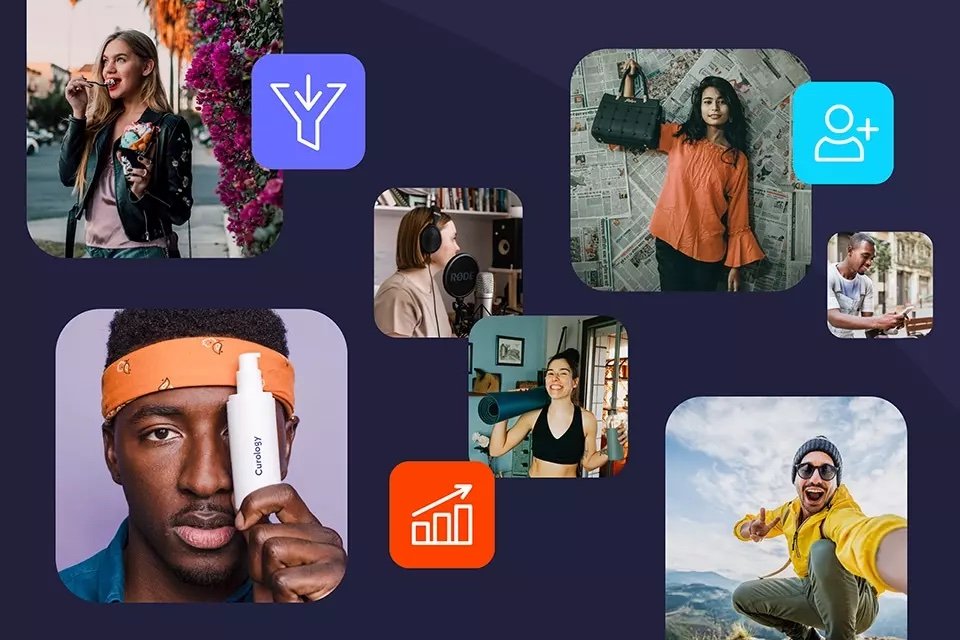by Amy Fillhouer
According to Influencer Marketing Hub, the social media influencer industry is set to hit a whopping $13.8 billion this year. With so many influencers endorsing so many products and services to their passionate followers, more companies are wondering if it’s right for them. If it means having your brand showcased to millions of people with one simple post, who wouldn’t want in?
Endorser partnerships are actually nothing new. The first paid radio endorsement took place in 1922, and this model has evolved over nearly a century into today’s influencer marketing. Thanks to ad budget reallocations and an increase in content consumption, influencer marketing blew up on social media during the pandemic. In fact, everyday people are now just as likely to rise to internet stardom as celebrities—as long as they find their niche: comedic content, relatable content, fitness content, cooking content… the list goes on. You get the point.
Maybe influencer marketing already seems like a no-brainer to you, or perhaps you’re on the fence because you’re not quite sure if it’s best for your brand. Before you take the plunge, let’s make sure you’re strategizing with the right tools.
Below are the six most frequently asked questions our digital strategists answer regarding influencer marketing:
Q: Is influencer marketing as relevant for B2B as it is for B2C brands?
A: Of course it is. Consumers trust each other more than they trust companies. 52% of radio listeners admit that their favorite personalities influence their opinions and purchases, which is why radio advertising amounted to nearly $27 billion in 2020. Word of mouth makes the world go ’round, and the consumer network is larger and more readily available than ever. One great example of this is the American Express Ambassador program. Influencers showcase their benefits using the #AmexAmbassador hashtag, and just like that, their audiences gain trust for the credit card giant.
Q: What does the process for finding the best influencers look like?
A: With the right agency, the process is seamless. Depending on your budget and goals, your selection of influencers can vary dramatically. One thing to keep in mind is that size isn’t everything. Because they typically charge lower fees and achieve higher engagement than influencers with millions of followers, “nano influencers” (1K-10K followers) and “micro influencers” (10K-100K followers) are gaining a lot more recognition with brands. Their audiences tend to trust them more, which results in better conversion rates for you! When sifting through your options, choose the influencers whose content correlates most with your goals.
Q: How do you get different influencers to stay on brand?
A: When it comes to handing your product or service off to someone else to promote, authenticity is key. The days of posting only perfectly edited and scripted content are over. Influencers know their audience, so they know what’s best when they’re creating content for you. Consumers can sniff out an inauthentic advertisement, and that creates distrust. Messaging that sounds honest and true to the influencer is what compels their followers to become your customers. Put together a brand guide for your endorsers (hint: we can help) with talking points and background information, but keep an open mind during the content approval process.
Q: Which platforms are best for influencer marketing?
A: Even un-tech-savvy users know their way around Instagram, so it’s still the traditional starting point for most influencer marketing journeys. But we encourage you to broaden your horizons. Since the COVID-19 lockdown, social media users have become more impatient with their content intake and have begun favoring raw, easily digestible videos instead of filtered photos with lengthy captions.
Enter TikTok: Gen Z’s domain that has since bled into nearly every generation who uses smartphones. The video-focused app introduced a new algorithm that centers around content genres instead of popularity. Engagement on TikTok doesn’t rely on a large following, just good content that warrants engagement. Impactful 60-second videos have caused small businesses to sell out within days of a product going viral. When working with your influencer partners, don’t be afraid to try something new!
Q: How is the success of an influencer marketing campaign measured?
A: Depending on whether you’re trying to boost sales, web traffic, social media engagement or brand awareness, there are a number of ways to measure a campaign’s ROI. One is by tracking the influencer’s engagement, especially if your main goal is to create more brand awareness. At the end of the campaign, each influencer will provide you with the analytics from their sponsored posts. They’ll be able to show you how many people clicked the links, saved or shared the post, and viewed the story or in-feed content.
Views and likes are both significant influences, but even the most followed celebrities on social media generate less than a 3% engagement rate. Pay attention to spikes in web traffic, and plan ahead to track conversions. For example, create a specific landing page ahead of time, or give the influencer their own discount code so their content is directly tied to an amount of revenue.
Q: So how do I find out if influencer marketing is right for my brand?
A: Talk to us! One of Media Bridge’s core values is to Raise the Bar in everything we do. We keep a pulse on industry trends so you don’t have to, and our team is constantly collecting resources to help you and your brand grow. Learn more about influencer resources from our industry experts.
